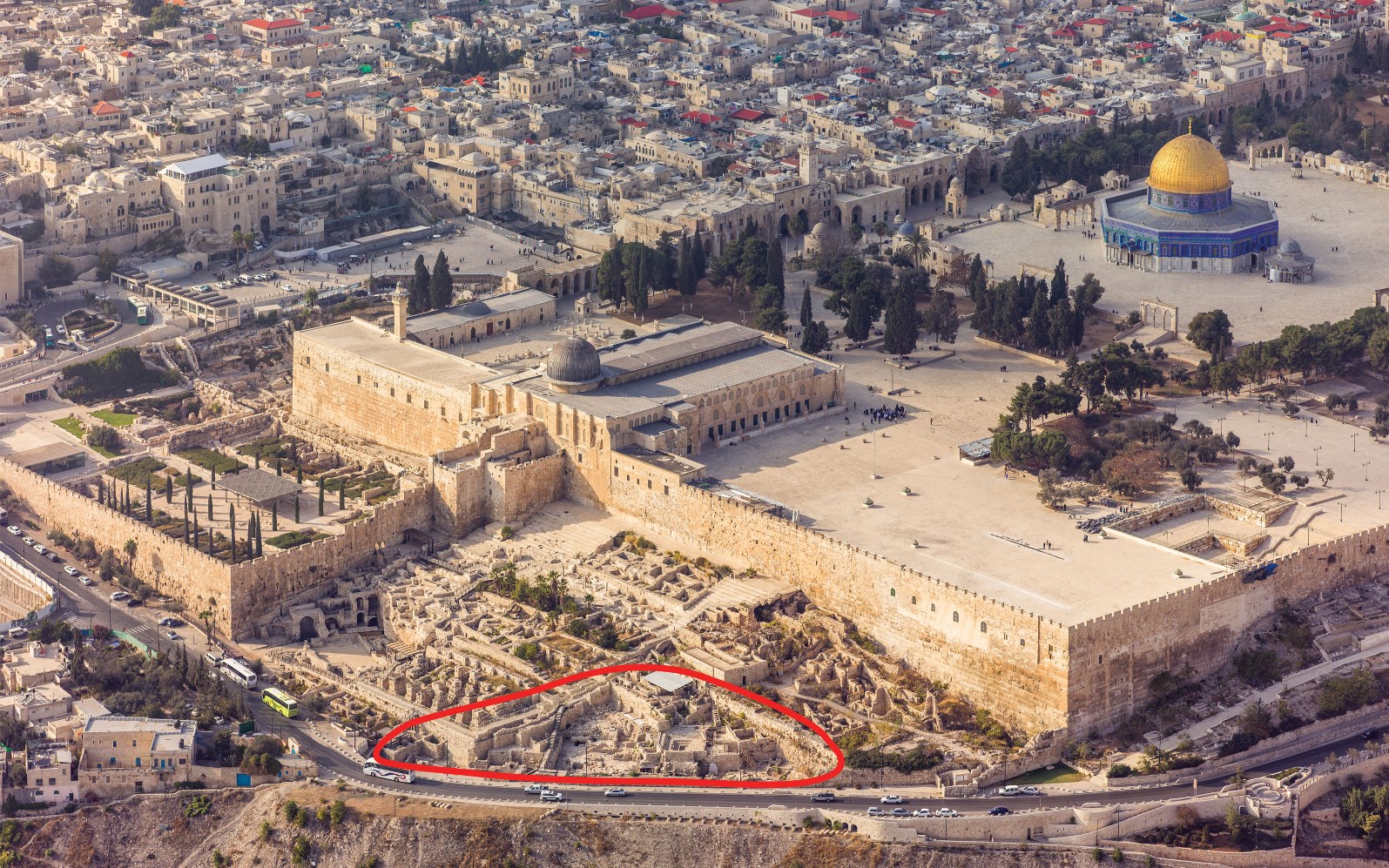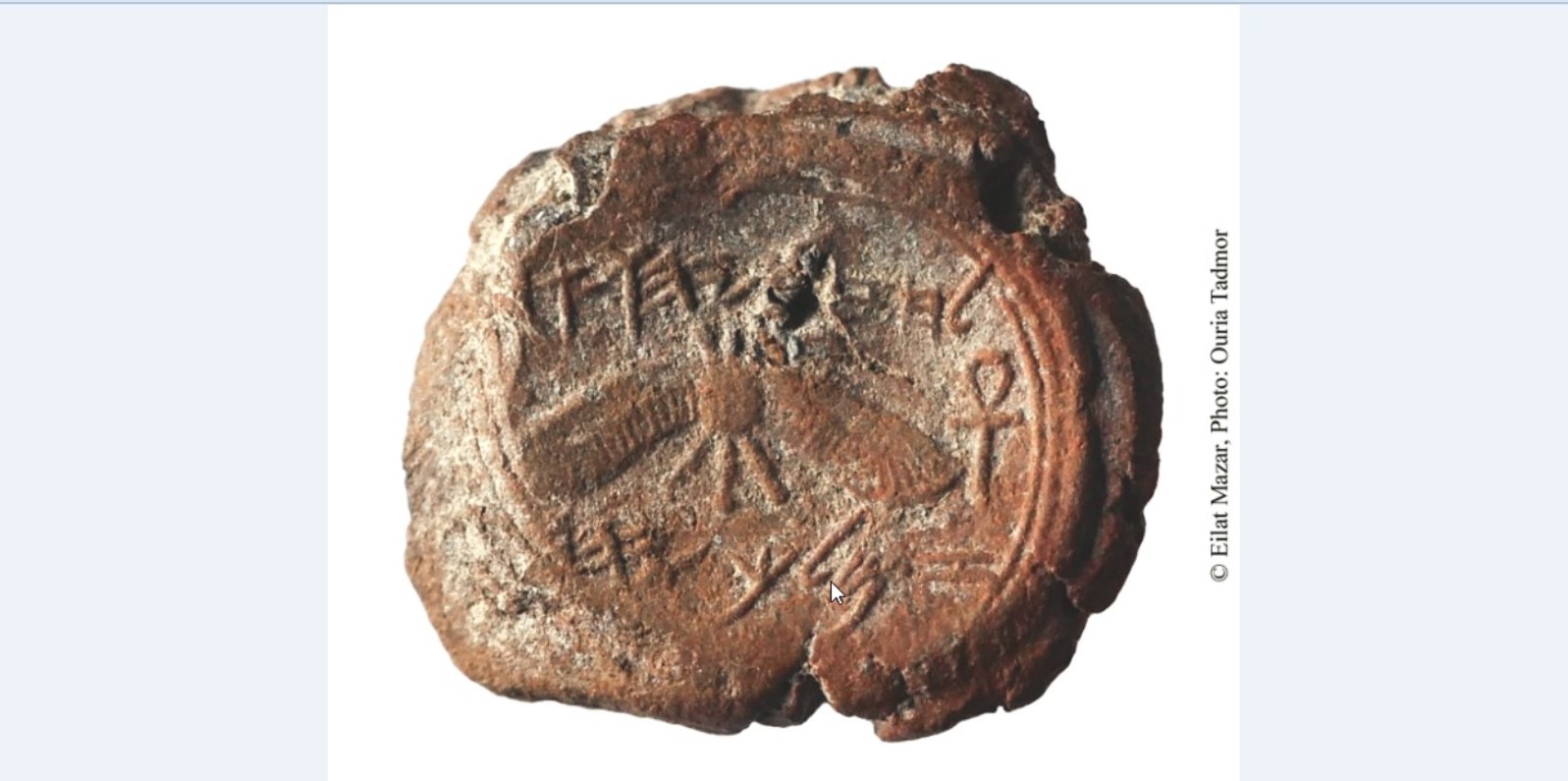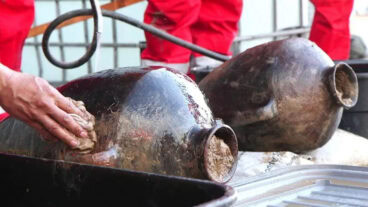Biblical archeology buffs are abuzz over the impression of the royal seal of King Hezekiah (727–698 BCE) unearthed at the foot of the southern wall of Jerusalem’s Temple Mount.
The impression bears an inscription in ancient Hebrew script that translates as “Belonging to Hezekiah [son of] Ahaz king of Judah” along with a two-winged sun flanked by two ankh symbols symbolizing life.
The find was announced today (December 2) at the Hebrew University of Jerusalem, as the dig was carried out under the direction of Eilat Mazar from the university’s Institute of Archaeology.
“Although seal impressions bearing King Hezekiah’s name have already been known from the antiquities market since the middle of the 1990s, some with a winged scarab (dung beetle) symbol and others with a winged sun, this is the first time that a seal impression of an Israelite or Judean king has ever come to light in a scientific archaeological excavation,” Mazar said.
Measuring 9.7 by 8.6 millimeters, the oval impression was imprinted on a 3-mm thick soft bulla (piece of inscribed clay) measuring 13 by 12 mm. Around the impression is the depression left by the frame of the ring in which the seal was set. The bulla originally sealed a document written on a papyrus rolled and tied with thin cords, which left their mark on the reverse of the bulla.
This 2,700-year-old artifact first came to light during a 2009 excavation of a refuse dump dated to the time of King Hezekiah or shortly after, and originated in the Royal Building that stood next to it and appears to have been used to store foodstuffs. This area is called the Ophel.
The bulla was found together with 33 additional bullae imprinted from other seals, some bearing Hebrew names, their reverse showing marks of coarse fabric and thick cords that probably sealed sacks containing foodstuffs.

The seal impression was found during the wet-sifting of earth layers from the excavation in the Emek-Zurim wet-sifting facility, directed by Dr. Gabriel Barkai and Zachi Dvira, under the auspices of the Nature and Parks Authority and the Ir David Foundation. The bulla was discovered by Efrat Greenwald and identified by Reut Ben-Aryeh.
The full research about King Hezekiah’s bulla is included in the first volume of the Ophel Excavations 2009–2013 Final Reports, published today with the support of the David Berg Foundation.
(Video copyright of Eilat Mazar and Herbert W. Armstrong College)













